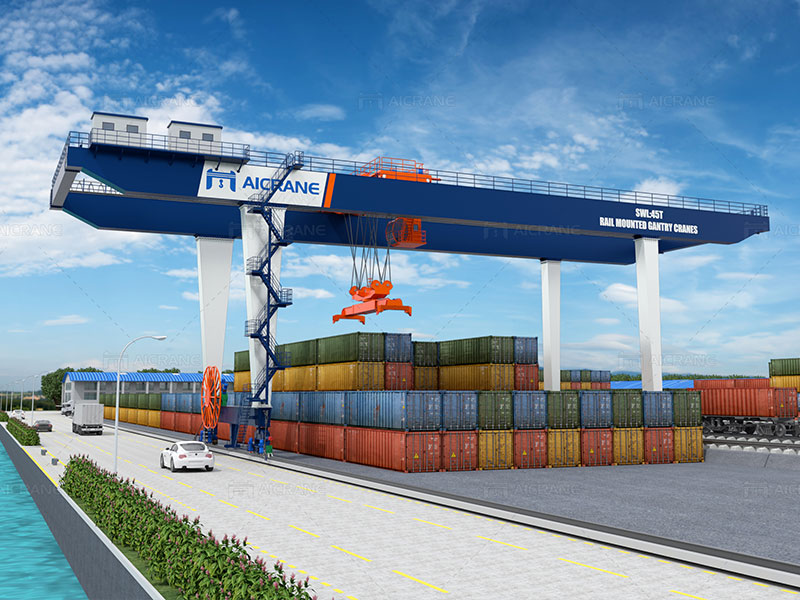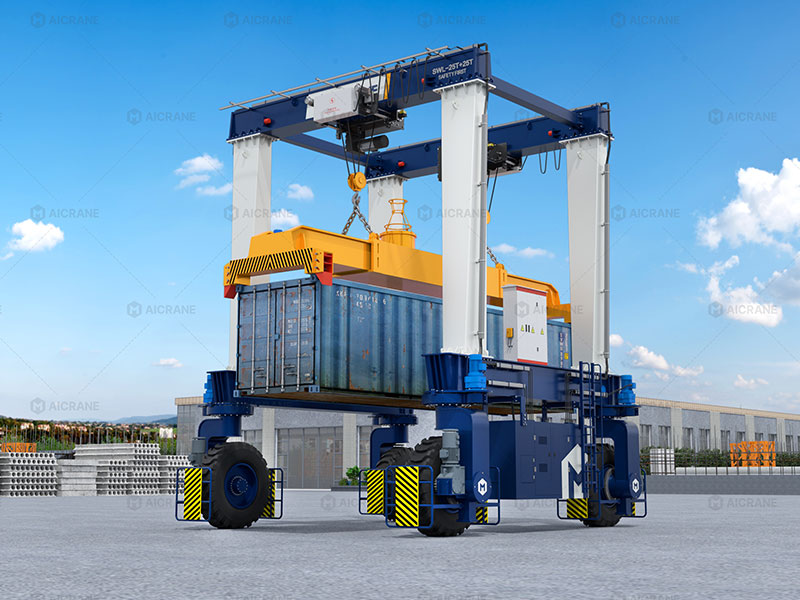Container gantry cranes, often seen at ports and container terminals, are essential for the efficient handling and movement of large, heavy containers. These cranes are complex, specialized pieces of equipment that are tailored to meet specific operational requirements. Because of their size, technological capabilities, and role in heavy-duty lifting, customization is a key factor influencing the price of container gantry cranes. In this article, we will explore how customization options affect the container gantry crane price, taking into consideration factors such as design, capacity, operational environment, and additional features.

Understanding Container Gantry Cranes
Container gantry cranes, also known as rail mounted gantry crane (RMG) or rubber tired gantry crane (RTG), are designed for loading, unloading, and stacking containers at ports. Their primary function is to facilitate the movement of shipping containers from ships to trucks or trains and vice versa. These cranes can operate on tracks (RMG) or move freely on rubber tires (RTG), depending on their design and application.
Given the variety of operations in different ports, container gantry cranes need to be built with various customization options to meet specific handling, lifting, and operational requirements. These customization options influence everything from the crane’s lifting capacity to its movement efficiency, all of which are reflected in the final price.
Key Customization Factors Affecting Price
- Lifting Capacity
The lifting capacity of a container gantry crane is one of the most significant factors affecting its price. Container handling involves lifting heavy loads, so the crane’s lifting capacity must align with the operational demands of the port or terminal. Common container gantry cranes have lifting capacities ranging from 10 tons to over 50 tons.
How Customization Affects Price:
- A crane designed to lift lighter containers may have a lower cost, as it requires less structural reinforcement and less powerful lifting components.
- In contrast, cranes with higher lifting capacities, such as those required for ultra-heavy containers or heavy-duty port operations, will require stronger components, larger motors, and more robust structural design, leading to a higher price.
- Span and Height Adjustments
The span refers to the width of the crane’s reach, typically measured from the center of one rail to the center of the other rail. The height of the crane, which determines how high it can lift containers, is equally important. Ports with larger containers or a need to stack containers higher require cranes with greater height and wider spans.
How Customization Affects Price:
- Cranes with greater span and height capabilities involve longer booms, stronger columns, and additional reinforcement, which drive up material and manufacturing costs.
- Customization options that increase the span or lifting height to accommodate different container sizes and stacking configurations can significantly affect the price, making these cranes more expensive.
- Rail-Mounted vs. Rubber-Tired Gantry Cranes
Rail-mounted gantry cranes (RMG) and rubber-tired gantry cranes (RTG) are both commonly used in container handling but offer different operational advantages. RMG cranes are designed for track-based movement, providing stability and precision, while rubber tire crane is more versatile and mobile, able to move freely around the terminal.

How Customization Affects Price:
- RMG Cranes: Customization often involves the length of the track, type of rail system, and even the layout of the terminal. Custom-built rail systems and foundations can increase costs.
- RTG Cranes: These cranes offer more flexibility but come with higher operational costs due to the requirement for specialized tires, motors, and a more complex control system for movement. If a port requires RTGs with advanced steering options, such as 360-degree rotation or automated steering systems, these features can significantly raise the gantry crane cost.
- Power Supply and Automation Systems
Container gantry cranes can be powered by either electric or hybrid systems. In addition, with the increasing trend of automation in port operations, many container gantry cranes are now equipped with advanced automation technologies, such as automated control systems, remote monitoring, and AI-based operational management.
How Customization Affects Price:
- Power Supply: The choice between electric or hybrid power systems will affect the crane’s initial purchase price, with hybrid or fuel-powered cranes often being more expensive due to the complexity of their power systems and fuel requirements.
- Automation and Smart Features: Automated gantry cranes, equipped with advanced sensors, cameras, and robotic arms for precise container handling, often come with premium price tags. Additionally, integration with terminal operating systems (TOS) and automated stacking cranes (ASC) requires a higher level of customization, increasing both the initial cost and maintenance costs over time.
- Environmental Considerations
In today’s market, there is increasing pressure for port operators to reduce their carbon footprint and comply with environmental regulations. Many operators opt for green technologies, including electric-powered cranes, low-emission diesel engines, or noise-reducing systems. Some ports even require cranes that meet specific environmental standards.
How Customization Affects Price:
- Green cranes, such as those that use electric power or hybrid systems, are often more expensive due to the additional technologies needed for cleaner energy sources and reduced emissions.
- Features like noise-reduction systems, emission controls, and other sustainable design elements will increase manufacturing costs but may be necessary for compliance with local environmental regulations or for enhancing operational sustainability.
- Safety Features
Safety is a top priority in container handling operations due to the heavy loads and the potential for accidents. Gantry cranes are often equipped with a variety of safety features, including anti-collision systems, load monitoring systems, emergency stop features, and fail-safe mechanisms.
How Customization Affects Price:
- The inclusion of additional safety systems will increase the cost of the crane. Anti-sway mechanisms, collision avoidance sensors, and redundant safety systems are highly effective in preventing accidents but require more advanced components and integration, which translates into a higher price.
- Maintenance and Serviceability
Customizing a crane to include easy-to-maintain features, such as quick-access panels, automated self-diagnostics, and modular components, can help reduce long-term operating costs. However, these features often come with an increased initial cost.
How Customization Affects Price:
- A crane with advanced maintenance-friendly features will likely be more expensive, as they require sophisticated engineering and design. While they reduce downtime and long-term repair costs, the initial investment for such cranes is higher.
- Climatic and Site-Specific Modifications
Port environments vary greatly depending on geographic location. Cranes built for ports in regions with extreme weather conditions (e.g., high temperatures, humidity, or salt-laden air) require additional modifications, such as corrosion-resistant materials or specialized coatings to ensure longevity and optimal performance.
How Customization Affects Price:
- Customizing cranes for harsh environmental conditions results in higher costs due to the materials and coatings required. For example, cranes that need to operate in coastal or tropical environments may require corrosion-resistant steel or specific paints that can withstand saltwater exposure, increasing both material and labor costs.
Conclusion
Customization plays a crucial role in determining the price of container gantry cranes. From lifting capacities and span to automation, safety features, and environmental considerations, each customization option influences the overall cost of the crane. While a more basic, standard crane may be less expensive upfront, investing in customization can lead to greater efficiency, safety, and long-term savings in operational and maintenance costs. For port operators, the key is to balance customization with budget constraints to meet operational needs effectively while ensuring that the crane remains a cost-effective asset in the long run. Understanding these customization options and their impact on price will help businesses make informed decisions when purchasing a container gantry crane tailored to their specific requirements.